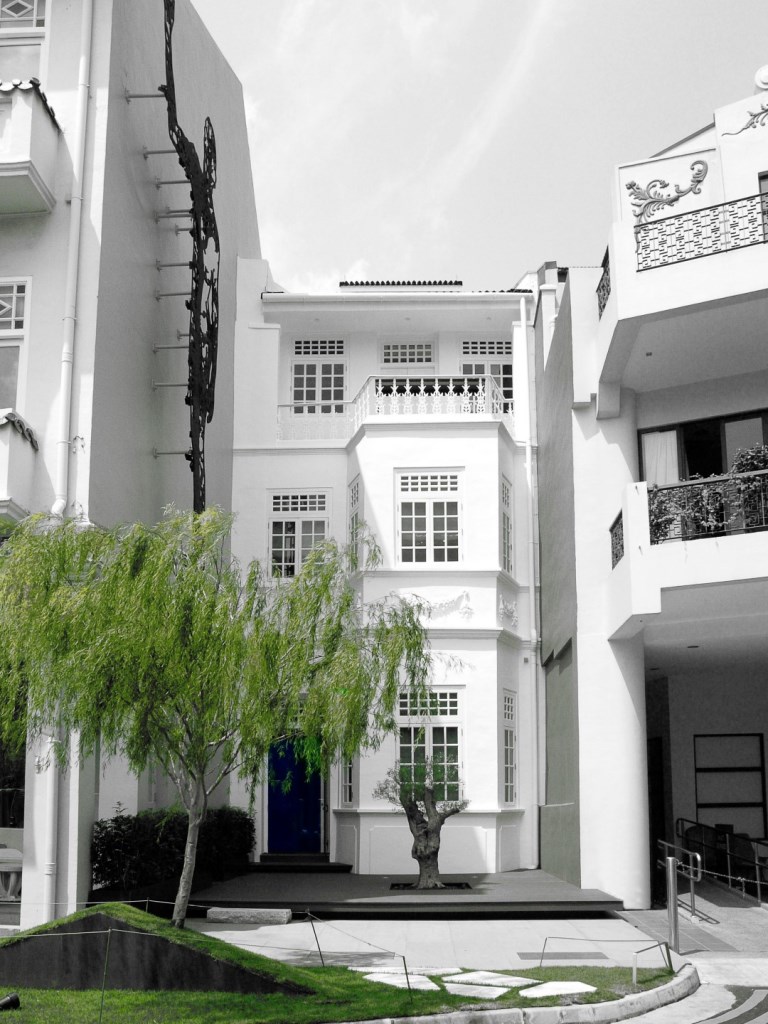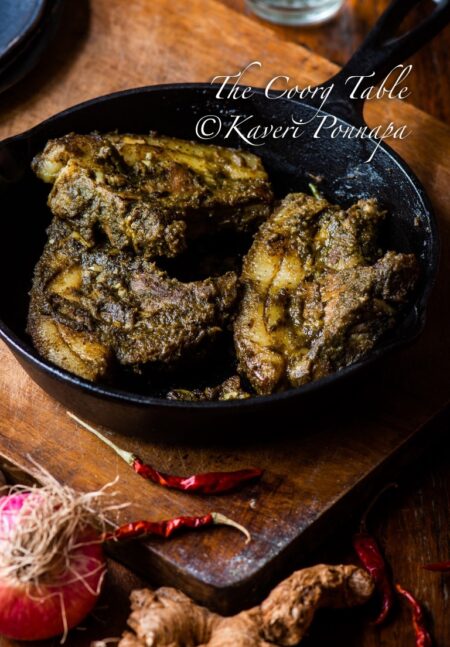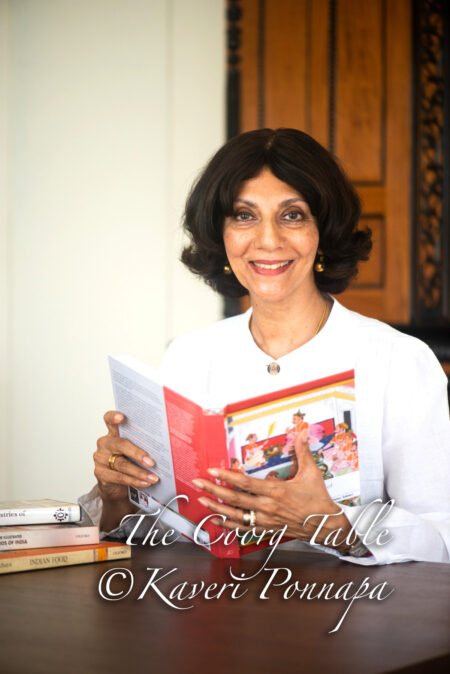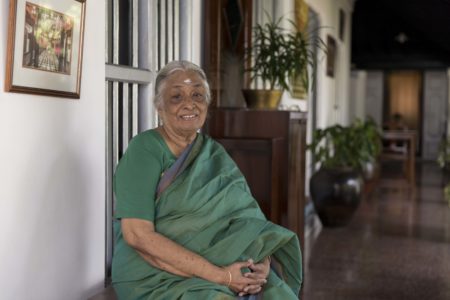With the continuing trend of more and more brilliant young chefs creating restaurants of distinctive character across the globe and tossing off virtuoso performances, the age of the food pilgrim has truly arrived. Journeys are planned across continents in pursuit of a single, superlative experience: the restaurant has become a destination. For the better part of the last decade, we have travelled to Singapore in search of the extraordinary dining experiences that lie scattered – extravagantly, casually – across the cityscape. In the couple of years since we last visited, driven by the city’s frenzied gourmandizing, Singapore has soared high on international lists as a premiere gourmet destination; one opening in particular, caught my attention and, on our latest visit, about six weeks ago, we made swift reservations.
We are a good half hour early – having made allowance for the traffic – when our taxi pulls up near an olive tree growing outside a blue door in China Town. As we emerge, slightly apologetically, expecting a wait, a pleasant young man quickly ushers us in: “Don’t worry, he says, “the table is yours for the evening.” This is Restaurant André, at 41, Bukit Pasah Road, where a gifted young chef treats diners as he would guests at his table, in his own home. There’s no hurry, at André. With just thirty covers in a remarkably compact space, what comes to your table is a series of paintings and delicate food sculptures of surprising intensity. Beginning with a reflection that “our capacity to taste food is informed by our memory banks and personal experiences,” the tasting menu explores André Chiang’s ‘Octaphilosophy’ – eight unique prisms through which flavours and qualities are viewed and acknowledged – ‘Pure’, ‘Salt’, ‘Artisan’, ‘South’, ‘Texture’, ‘Unique’, ‘Memory’ and ‘Terroir’. ‘Pure’, for instance, explores the essential integrity of ingredients undisturbed by seasoning, or cooking. From the very first presentation, all your senses are fully engaged and there is a sense of wonder that lasts to the very end of the experience, The immersion is so complete, you only realize how long you have lingered, after the last guest has left, when you walk onto the silent and deserted streets of Singapore, exhilarated.
The room where we are seated is small, cool and calm; the walls look like a forest in winter and my bag is perched on the back of a large, woolly black sheep. On my plate is a miniature garden of chocolate and garlic mud that sprouts sheer mushroom crackers and links us immediately to the source of most of the food we consume – the earth. There is a single, pristine clam and small sheets of taut chicken skin crackle with masala. How is it possible for so many flavours to be experienced, each one pure and distinct, with no blurring of edges? Lying open on the table is what appears to be a leather bound, antiquarian book, with mellow pages, La Morte de la Reine. It is, in fact a wine list, sourced from some of the iconic, artisanal winemakers of France. We spend part of our evening with the 2007 Pouilly Fumée Silex from the late Didier Dagueneau, the legendary winemaker from Saint Andelain – a beautiful, chiseled, flinty wine with sharp notes of citrus fruits, before we move onto the Roussillon Le Clos de Fees 2007, Cotes de Roussillion.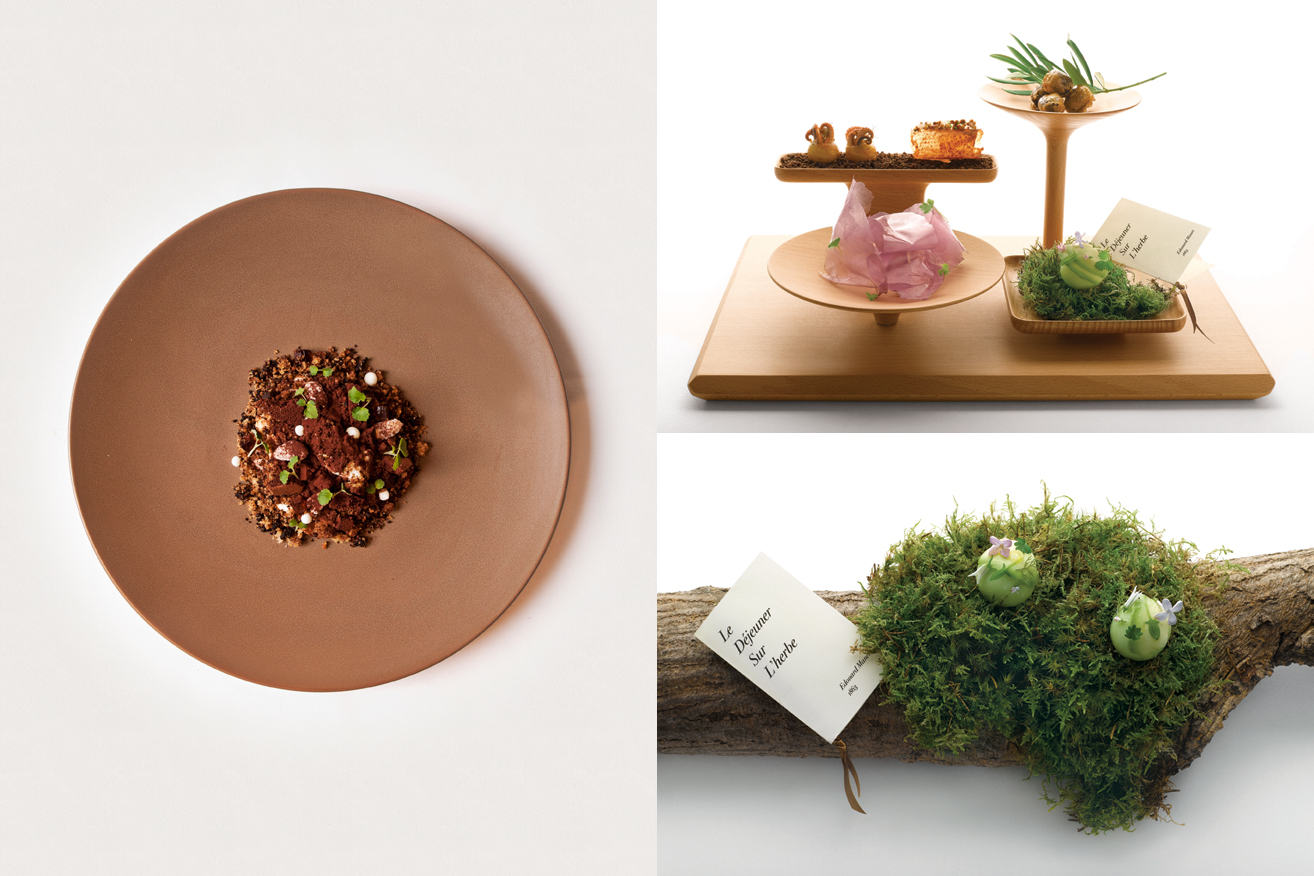 The food distills the journey of a chef who began his career working with some of the legendary chefs of France – Pierre Gagnaire, Joel Robouchon, Michel Troisgros, Pascal Barbot and Jacques and Laurent Pourcel – onto every single plate that emerges from his glass –fronted kitchen. His menus have an evanescent quality, changing every day, and even during the course of a single evening, depending on the ingredients and sometimes, personal preferences. As the evening progresses, the experience only intensifies. Landscapes are mapped, some known, others strange and exotic; the familiar is made unfamiliar, and there is a constant sense of anticipation. Braised Kyoto aubergines, topped with crispy duck tongues, followed by a perfect arrangement of Japanese Needle fish with a reduction of parsley, brussels sprouts and artichokes. There are small deceptions. ‘Texture’ is a beguiling presentation of a charcoal of vegetables and risotto, transformed into inky crackers, while the ‘risotto’ is in fact tiny pieces of squid posing as grains of rice. Edible flowers and plants take the place of seasonings. Compositions arrive on artistic juxtapositions of glass, wood, ceramics and, sometimes, on a raw slice of French slate, invoking the emotion and spirit of the South of France. A small, clear dish of Hot Foie Gras Jelly brings forth wave after wave of deep recollections – of forgotten meals, the scent of wet earth, of forest and field – this is ‘Memory’ cutting across cultures and continents. There is also tender lamb, black olive powder and mustard seeds. The last offerings are cool scoops of yoghurt granita with dill pollen and baby marshmallows; a basil sorbet with Granny Smith apples and miniature fennel meringues, and a final burst of deconstructed Snicker Bar, which leaves you with a hint of the ocean on your palate.
The food distills the journey of a chef who began his career working with some of the legendary chefs of France – Pierre Gagnaire, Joel Robouchon, Michel Troisgros, Pascal Barbot and Jacques and Laurent Pourcel – onto every single plate that emerges from his glass –fronted kitchen. His menus have an evanescent quality, changing every day, and even during the course of a single evening, depending on the ingredients and sometimes, personal preferences. As the evening progresses, the experience only intensifies. Landscapes are mapped, some known, others strange and exotic; the familiar is made unfamiliar, and there is a constant sense of anticipation. Braised Kyoto aubergines, topped with crispy duck tongues, followed by a perfect arrangement of Japanese Needle fish with a reduction of parsley, brussels sprouts and artichokes. There are small deceptions. ‘Texture’ is a beguiling presentation of a charcoal of vegetables and risotto, transformed into inky crackers, while the ‘risotto’ is in fact tiny pieces of squid posing as grains of rice. Edible flowers and plants take the place of seasonings. Compositions arrive on artistic juxtapositions of glass, wood, ceramics and, sometimes, on a raw slice of French slate, invoking the emotion and spirit of the South of France. A small, clear dish of Hot Foie Gras Jelly brings forth wave after wave of deep recollections – of forgotten meals, the scent of wet earth, of forest and field – this is ‘Memory’ cutting across cultures and continents. There is also tender lamb, black olive powder and mustard seeds. The last offerings are cool scoops of yoghurt granita with dill pollen and baby marshmallows; a basil sorbet with Granny Smith apples and miniature fennel meringues, and a final burst of deconstructed Snicker Bar, which leaves you with a hint of the ocean on your palate. 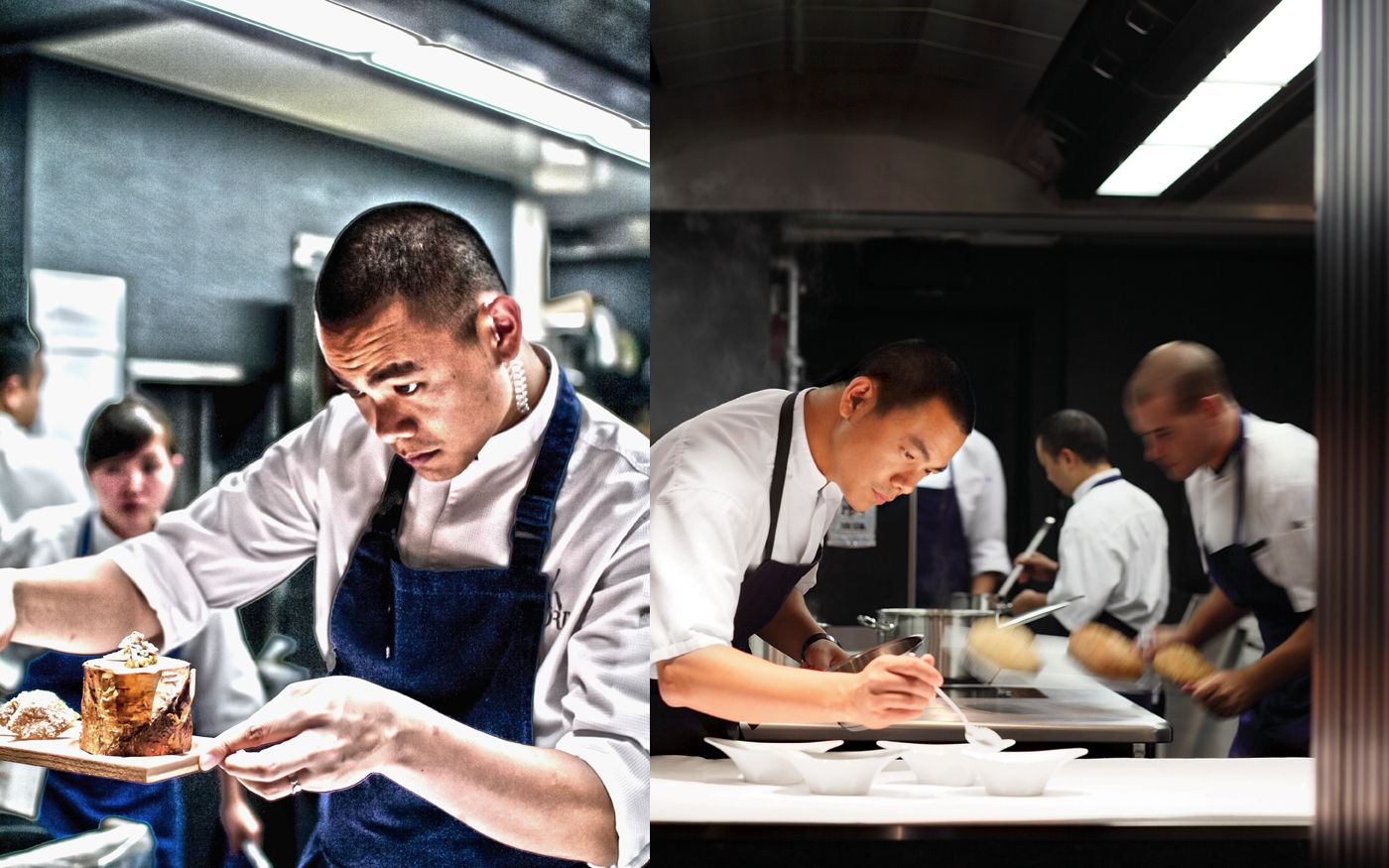
Chef Chiang is a quiet and extremely modest man of deep imagination, his creativity and skill evident not only in the food, but in the subtle, artistic ceramic dishes that you dine off, which he hand crafts. Upstairs from the restaurant is his atelier, dotted with his reflections, works and books. There are many references to Thomas Keller around us here and elsewhere.
To interpret André Chiang’s thoughts and philosophy is a staff of men and women passionate about what they do, who work in perfect symmetry. Stepan Marhoul, the restaurant manager, orchestrates the evening smoothly – the ambience is calm, but shot through with excitement. André is much more than a restaurant run by one of the worlds best young chefs – it is a place of the imagination, where the senses are uniquely engaged by a menu and ambience which afford deep emotional satisfaction. It is an experience, to borrow a favourite phrase reportedly used by the late Didier Dagueneau, de toute beaute, of great beauty. The restaurant opened on 10th October, 2010 and by 2011, it was on the New York Times list of ’10 Restaurants Worth A Plane Ride”. If you have just one food journey to undertake this year, I would urge you to travel to André.
This article was published in Food Lovers Magazine, Vol.6, Issue 4, August /September 2012. Since then, Restaurant André is ranked #6 on the list of Asia’s 50 Best Restaurants, and #37 on the S. Pellegrino list of the World’s 50 Best Restaurants, besides being nominated Best Restaurant in Singapore, two years running and it has received accolades and attention from critics across the world. He has also been named one of the 15 most influential Chefs of the next decade, by Elite Traveler. Chef André continues to explore his philosophy of how our experience of food is influenced by our memory banks, working like an artist, and travelling across the globe, exploring and understanding flavours and sourcing small production wines from boutique wineries in France for his restaurant.
Image Credits: André Restaurant

